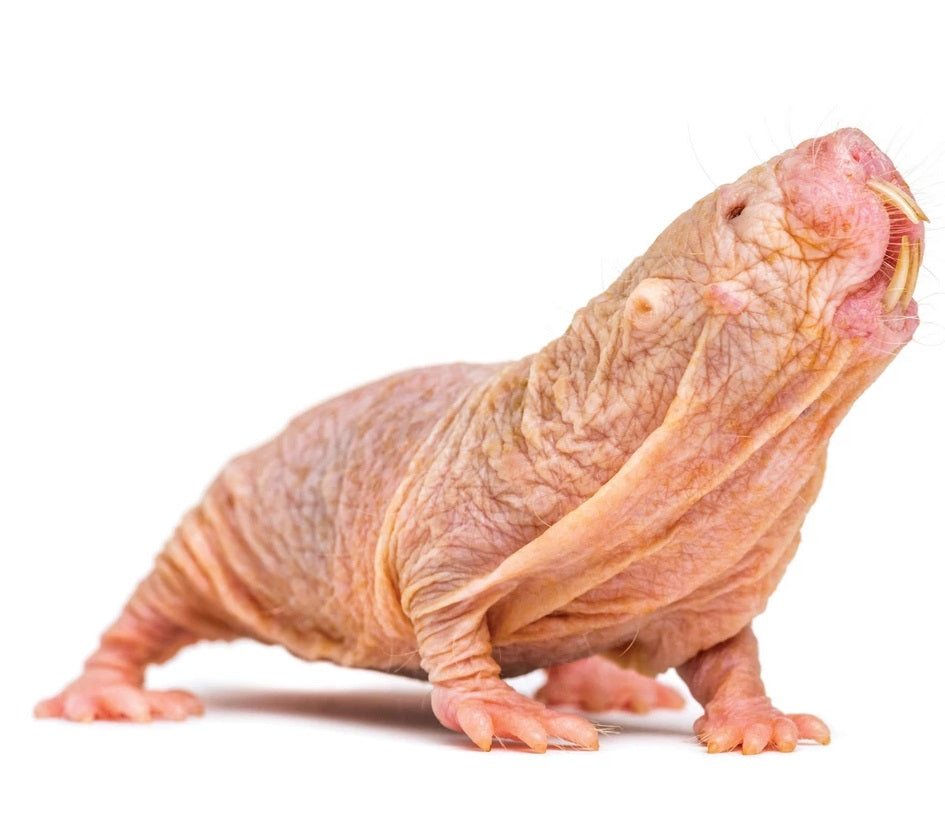
The Naked Mole-Rat's Marvel in Longevity and DNA Repair
In the quest for understanding aging and longevity, one remarkable creature has captured the attention of scientists and researchers: the naked mole-rat. This unique rodent, native to East Africa, defies conventional aging processes and boasts an impressive lifespan that can exceed 30 years, far surpassing that of other rodents. Recent scientific discoveries have shed light on the genetic adaptations that enable these fascinating creatures to repair their DNA and resist age-related diseases. This article explores the medical, regenerative, and beauty benefits of studying the naked mole-rat, along with its potential implications for human health.
The Naked Mole-Rat: An Overview
Naked mole-rats (Heterocephalus glaber) are small, hairless rodents that live in underground colonies. They exhibit a variety of unusual characteristics, including:
- Social Structure: Naked mole-rats live in large colonies, similar to social insects, with a single breeding female and numerous non-breeding workers.
- Thermoregulation: Lacking fur, these rodents rely on cooperative behaviors to maintain their body temperature.
- Remarkable Longevity: While most rodents have a lifespan of only a few years, naked mole-rats can live for over three decades.
The Secrets of Longevity
1. Enhanced DNA Repair Mechanisms
One of the most intriguing aspects of naked mole-rats is their ability to repair DNA damage efficiently. Studies have identified genetic changes that enhance their DNA repair mechanisms, allowing them to maintain genomic stability over their long lifespan. This capability is crucial for preventing age-related diseases such as cancer.
2. Low Incidence of Cancer
Naked mole-rats exhibit an exceptionally low incidence of cancer, a phenomenon that has sparked significant interest in cancer research. Their unique genetic adaptations may hold the key to understanding how these animals resist tumor formation, potentially leading to new cancer therapies for humans.
3. Unique Metabolism
Research has shown that naked mole-rats possess a distinct metabolic profile that supports longevity. Their bodies are adept at managing oxidative stress, which is often linked to aging and various diseases. Understanding their metabolic adaptations may provide insights into developing anti-aging interventions for humans.
Medical and Regenerative Benefits
1. Implications for Human Aging
The genetic adaptations of naked mole-rats could offer valuable insights into the aging process in humans. By studying the mechanisms that allow these rodents to live longer, researchers hope to uncover potential therapeutic targets for age-related diseases.
2. Advances in Regenerative Medicine
The study of naked mole-rats may lead to breakthroughs in regenerative medicine. Their exceptional healing abilities and longevity suggest that they possess unique biological pathways that could be harnessed for tissue repair and regeneration in humans.
3. Cancer Research Innovations
The low incidence of cancer in naked mole-rats has prompted researchers to investigate their unique genetic makeup. Understanding how these rodents avoid cancer may lead to novel strategies for cancer prevention and treatment in humans.
Beauty and Anti-Aging Insights
The longevity of naked mole-rats has implications beyond just health; it also sparks interest in beauty and anti-aging products. Here’s how insights from this remarkable rodent may influence the beauty industry:
1. Skin Health
The unique properties of naked mole-rat skin, which is resistant to certain types of damage, may inspire new skincare formulations. Ingredients derived from their genetic adaptations could lead to innovative anti-aging products.
2. DNA Repair in Skincare
As research into DNA repair mechanisms advances, the potential for developing skincare products that promote cellular repair and regeneration becomes more feasible. This could change how we approach aging skin and promote a more youthful appearance.
3. Natural Anti-Aging Solutions
The metabolic and regenerative processes observed in naked mole-rats may inspire the development of natural anti-aging solutions that leverage the body's own repair mechanisms.
Conclusion
The naked mole-rat is not just an intriguing subject of study; it represents a beacon of hope for advancements in medicine, regenerative therapies, and the beauty industry. The genetic adaptations that allow these creatures to thrive and live long lives may unlock secrets to enhancing human health and longevity.
As research continues to unravel the mysteries of this remarkable rodent, we may be one step closer to developing effective strategies for combating aging, enhancing regenerative medicine, and promoting overall well-being.
Sources:
1. National Institutes of Health - Aging and Longevity Research Link
2. Nature - Naked Mole Rat Research Link
3. Journal of Experimental Biology - Insights into Naked Mole-Rat Biology Link